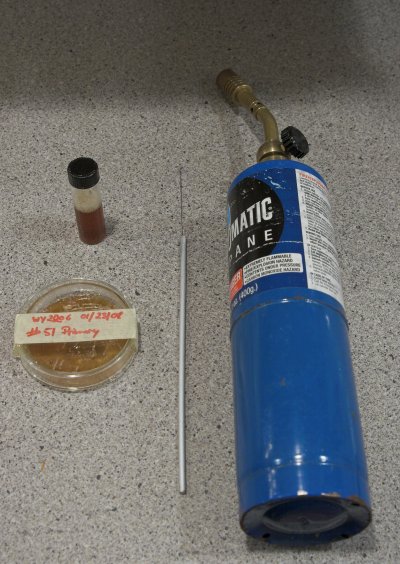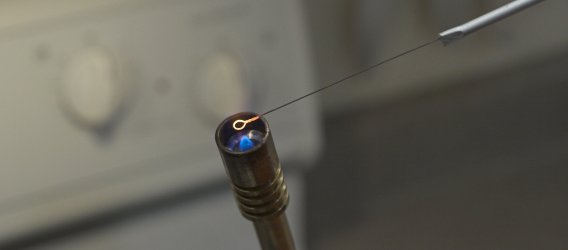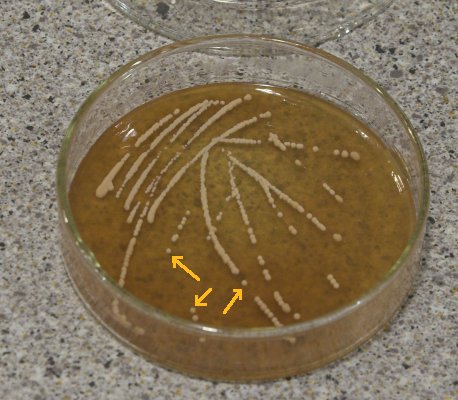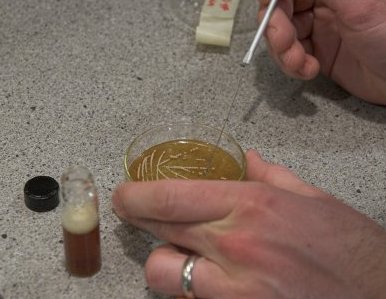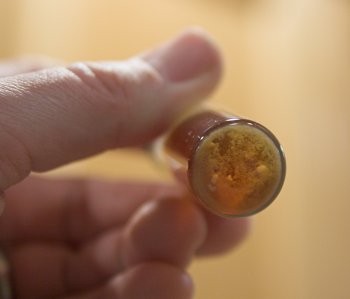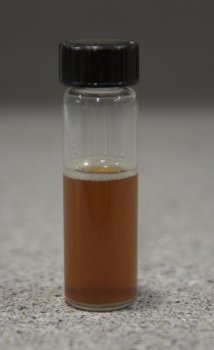Difference between revisions of "Growing Yeast from a Plate"
(→1st stage propagation) |
|||
| Line 55: | Line 55: | ||
| [[Image:Yeast_sediment_in_1st_stage.jpg]] | | [[Image:Yeast_sediment_in_1st_stage.jpg]] | ||
|} | |} | ||
| + | |||
| + | =2nd Stage Propagation= | ||
| + | |||
| + | Once there is some yeast sediment in the vial and the sample looks cloudy when shaken up, it's time to step it up again. For the 2nd stage I'm still using sterile wort. But this time a larger amount that has been canned in a baby food jar. Crack the seal and let some air in. Close it again and shake it up to dissolve some oxygen. Also shake up the vial and dump it into the 2nd stage wort. Let this ferment for another 2 days at a warm spot. | ||
Revision as of 03:37, 4 March 2008
Growing yeast from a plate (petri dish) allows the brewer to select only a few single cell growth colonies. By doing so a pure culture can be obtained even if the starting culture was questionable. But because the number of yeast cells is very small during the first few steps, a sterile environment is necessary.
Contents
What is needed?
- petri dish with yeast colonies (Yeast Cultures on Petri Dishes)
- inoculation loop
- flame source. Bunsen burner, alcohol lamp, blow torch or gas stove
- vial with sterile starter wort
Before you start
Make sure that there is no daft or other air movement in your working area. This could blow contaminants into your cultures. Loosen the cap of the vial or tube containing the 1st stage starter wort. This should pull in some air. Tighten the cap again and give it a shake to dissolve some of the oxygen. Since sterility is most important at this stage do not oxygenate the wort with other means that could spoil it. The yeast will also grow without lots of O2.
Also undo the tape that keeps the petri dish closed, but keep the lid on.
Using the flame source sterilize the inoculation loop by starting from its end and pulling it slowly through the flame. All parts of the lower half of the loop should have been glowing red. After that open the vial and stick the loop into the wort to cool it off. Otherwise you are going to fry the colonies that you are going to pick next picking.
Picking Colonies
In order to ensure that you are only using yeast colonies that have grown from a single yeast cell only consider single round colonies of yeast. Yeas colonies are off-white with dull looking surface. Some of your streaks on the plate should have produced such colonies.
| Using the sterile inoculation loop pick one colony at a time and place them into the wort in the vial. Repeat this until you have picked a few colonies. You could also pick only one. This would give you a pitch of yeast grown from a single cell. But I like to mix it up with a few colonies.
Close the plate and the vial. If you look at the bottom of the vial, you can see the colonies. |
1st stage propagation
2nd Stage Propagation
Once there is some yeast sediment in the vial and the sample looks cloudy when shaken up, it's time to step it up again. For the 2nd stage I'm still using sterile wort. But this time a larger amount that has been canned in a baby food jar. Crack the seal and let some air in. Close it again and shake it up to dissolve some oxygen. Also shake up the vial and dump it into the 2nd stage wort. Let this ferment for another 2 days at a warm spot.
